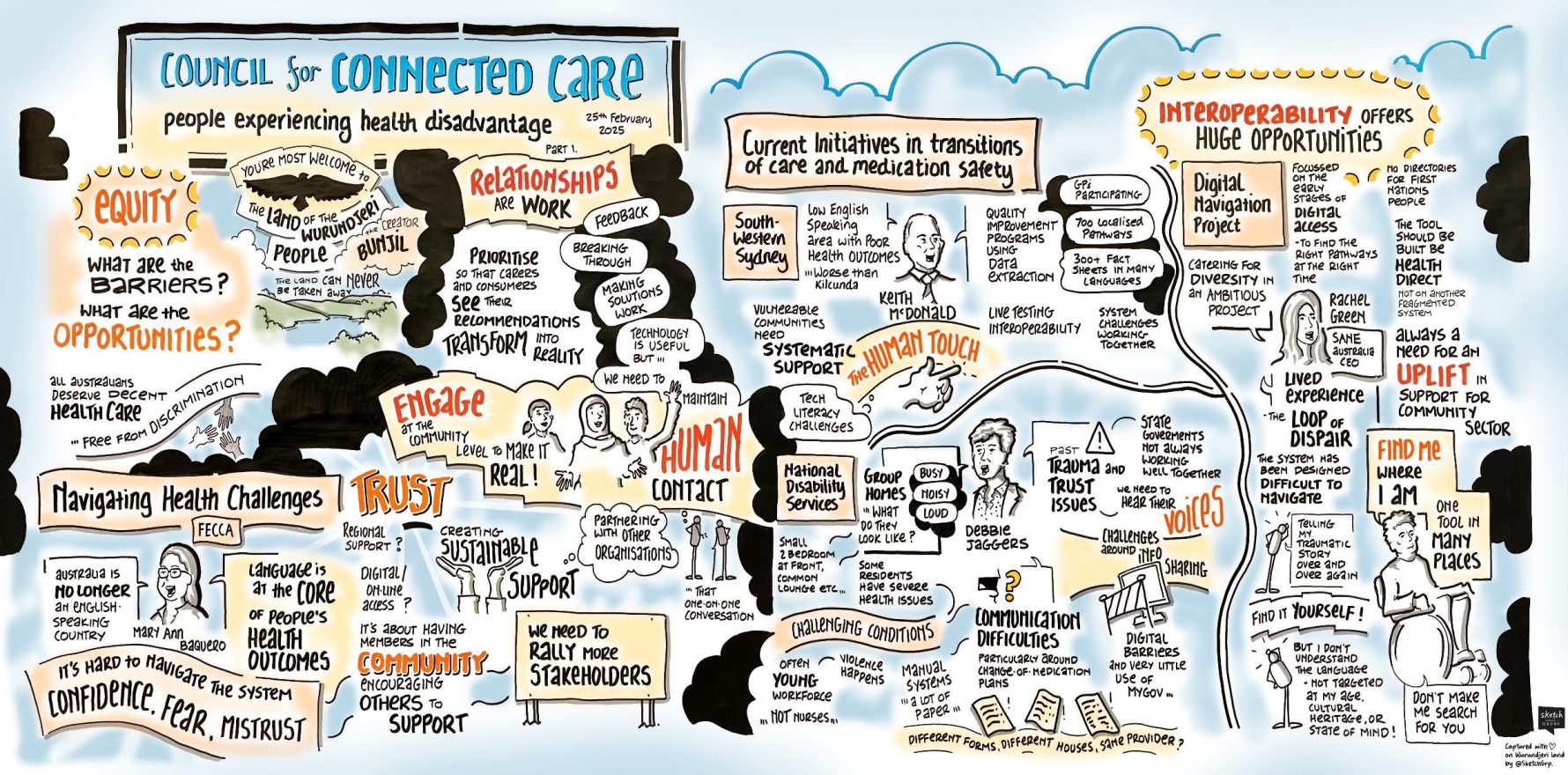What might the new private equity owners of Healthlink think and do about the trajectory of their significant secure messaging business in Australia and New Zealand?
Clanwilliam, which owns Australia’s major secure messaging service provider, HealthLink, confirmed this week that it is selling to global private equity firm TA Associates for about $716 million, which is about four and a half times revenue.
The deal is expected to take several weeks to complete because it will need to be cleared by regulators in Ireland, the UK, Australia and New Zealand, where the company has operations.
In Australia and New Zealand the Ireland-based Clanwilliam owns a few digital health properties: health insurance data group Konnect (New Zealand), pharmacy software vendor Toniq (New Zealand), anaesthetist patient management system vendor MBS (NZ and Australia), industry newsletter PULSE IT (Australia, NZ and Ireland), and secure messaging vendor HealthLink (Australia and NZ).
HealthLink is by far the largest and most important asset in Australia and New Zealand and the one likely of most interest to the respective governments in such a sale, because as a now near monopoly on secure messaging service provision in both countries – Medical Objects is an important, but distant, second provider in Australia – it is significantly intertwined in the current health system interoperability infrastructure of each country.
HealthLink might also be one of largest assets in the Clanwilliam group by revenue, which might make it a strategy focus for its new PE owners in the short term.
It is estimated that the revenue of HealthLink, which has been doing better in the last few years based on a series of state health-based contracts in Australia and their eReferral system for a lot of hospitals in New Zealand, is somewhere in the range of $50 million. If that’s true, then HealthLink represents nearly a third of Clanwilliam’s revenue.
This reinforces the idea that the new owners will be keen to understand the current trajectory and plans for the group.
Clanwilliam originally acquired HealthLink for something like $50 million in 2017 so in just eight years it looks like the group has managed to increase the value of the asset by about four times. Private equity would be proud of that performance.
If TA Associates has done its due diligence, its first question on the asset should be, how long does the old secure messaging model have to run in Australia and New Zealand before government plans to transform healthcare infrastructure by forcing providers and vendors to move to cloud-based data sharing technology subsumes the old secure messaging ecosystem (and with it HealthLink’s main revenue stream)?
HealthLink answered that question itself just last week at the HL7 trans-Tasman symposium in Sydney. Presenting on the company at the event Australian Clanwilliam CEO Dave Young said that the secure messaging model still had a good five to 10 years to run in Australia.
He also said that their major competitor wasn’t, as many in the audience may have imagined given the future focus of the HL7 organisation through its management of the FHIR standard on modern web-based interoperability, some of the emerging web-based data sharing apps such as Consultmed, but … wait for it, the fax machine.
If this is true – if any group understands the stats on the claim, it would be HealthLink – then paying four and half times revenue for the asset may not turn out to be such a bad buy for TA Associates.
Related
If a public hospital is wanting to get away from a heavy reliance on letters and faxes for things like out- and in-patient referrals and discharge summaries, current system plumbing dictates that you need to use secure messaging, because it’s the only technology that is tapped into the major GP and specialist patient management systems.
The major provider of that service in Australia is, of course, HealthLink and based on contracts the group has been involved with in SA, WA, NSW and Queensland in the last few years, HealthLink looks like it might be at its highest level of revenue ever.
If your major competition really is the fax – there is a surprising amount of faxing still going on – it is likely there is still growth in the secure messaging model for HealthLink to come, as counterintuitive as that may sound at this point of time.
All those state-based contracts between hospitals and HealthLink aren’t cheap to put in place – WA’s smart eReferral tender was awarded for $8.4 million last year – so it won’t be easy for any of the state health departments politically to turn around and switch to the more agile web applications that are starting to emerge.
There are a couple more dynamics which are likely to be in HealthLink’s favour moving forward.
For the web to really take hold in secure communications between different points of the system, each point needs to web enabled, probably via some sort of FHIR and open API integration.
While the government is pushing vendors and providers in this respect there is a long way to go before the platforms being used by all our providers are FHIR enabled to talk to each other in any significant volume.
HealthLink’s new owners, TA Associates, aren’t mugs when it comes to understanding evolving healthcare technology platforms. Healthcare is a major arm of the group and it has been for a long time, so more likely than not TA Associates will understand what can and can’t be done to transition the HealthLink business when the time really comes.
It might be that TA will look to help that process through synergistic acquisitions. It has a lot more access to money to build out a portfolio of businesses in Australia than Clanwilliam ever had. It might be that local software vendors have a new player in town in terms of the wider interoperability picture.
On this point, the other major Clanwilliam asset is Ireland’s major GP patient management platform – the equivalent of Best Practice and in terms of market dominance even better. It is understood their product has about 90% market share of GPs in that country – Best Practice is generally thought to have between 65-70% of GPs in Australia.
Of course, HealthLink is not sitting back and relying wholly on its secure messaging revenue stream to one day run dry. It is actively building out its own web and FHIR based eReferral products.
It’s a very hard business challenge to eat your own product with a new one and keep your revenue model intact, but given its extensive customer base predicated on its secure messaging footprint the group is in pole position to assume a lot of web based data-sharing contracts if and when a hospital or other providers chose to move to web-sharing protocols.
The counterargument to all this is that the push for web-based data sharing functionality will go quickly from here, not slowly. We might be getting to a tipping point and that could put a big dent in HealthLink’s predicted 5-10 year timeframe for secure messaging revenue.
Just just how hard and fast the Australian federal government intends to go in terms of building its own centralised systemwide web-based data infrastructure could be critical to how HealthLink rolls from here.
As an example, the government has made it clear that it wants to build, run and control eRequesting for pathology in the not-too-distant future. That’s a huge chunk of HealthLink’s current secure messaging revenue that would be at risk.
Eventually the government would like to move that pathology eRequesting infrastructure to all providers – so GPs, specialists and hospitals – which would be another big chunk of HealthLink’s secure messaging revenue.
Some people suggest all of this government ambition is very hard and will take more than five years to do, if they can do it at all.
But maybe not.
Our national electronic scripts infrastructure got up in a reasonably short period of time – in part driven by the system needs of covid – and a lot of the problems that face eRequesting have been already solved through this project.
The final piece in the puzzle of how long the government might take to drive all our providers and software platform vendors to web-sharing technology is cyber security.
The problem is looming very large in the minds of the federal government and not just those working in healthcare. Most people you talk to in Canberra say that the governance around data security will be driven across the board in critical areas of Australian data-sharing infrastructure, of which healthcare is one, within two years.
That’s quite a bit less than five to 10 years.





